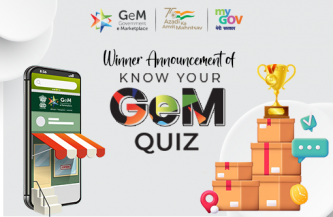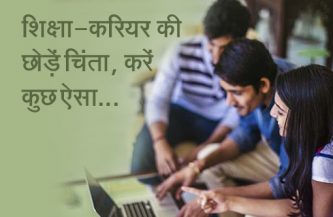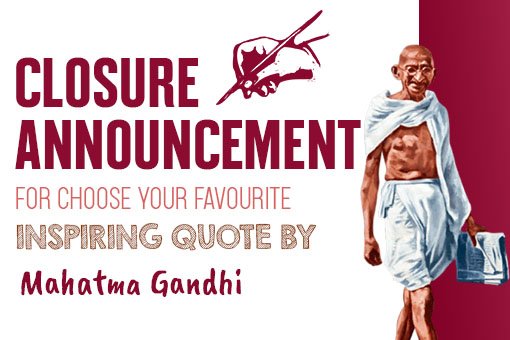Nine years of good governance that fostered the development and touched the lives of millions

Kautilya Arthashastra underlines the duties of a king, (a ruler in present day), instructing on how to reign. ‘Prajasukhe sukham radnya prajanaamcha hite hitam natmapriyam hitam radnya prajanaam tu priyamhitam’ – implying ‘the happiness of the king (read ruler) lies in the happiness of the people; he should see his own interest only in the interest of the people. The interest of the king is not in the one who is dear to himself, his interest is in the one who is dear to the subjects. And when we see governance under the leadership of Prime Minister Narendra Modi over the last nine years, we realize that the Modi government has indeed fulfilled all its duties of a true ruler as described by Kautilya Arthashastra.
When ordinary citizens talk about politics, they often end their conversation by saying, leave this topic here… it really does not matter who comes to power as it will not make any difference in our lives”. This is because no matter who comes to power, the common man is left to mend for himself. He has to strive to resolve his concerns. And hence, he does not mind any ruler because nothing really changes for him.
Now, in this backdrop, when we look at the nine-year tenure of the government, i.e., from 2014 to 2023, we can affirmatively say that this government has indeed succeeded in creating a system that made the daily life of the common man easier whilst ensuring that the common man’s basic needs are also duly fulfilled. But before we delve into the government’s strategic decisions, both at the national and international levels, let us see how the government brought about a visible change in the lives of the common man.
The Direct Benefit Transfer scheme created by the government to transfer financial assistance from various government schemes directly to the accounts of the beneficiaries without the involvement of a middleman has grossly revolutionized the lives of the common people. Scholarships to students and grants of different schemes are directly credited to the bank accounts of the beneficiaries. The common man no longer needs to visit government offices frequently to get this financial assistance.
Some may argue as to what difference will it make in the lives of the people with a change of government. Well, the answer to this question lies in a structure like the DBT. Citizens who have taken loans from schemes like the Pradhan Mantri Awaas Yojana and Toilet Yojana get financial assistance from the central government directly in their respective bank accounts. Also, to make the DBT system operational and successful, the Modi government got the poorest of the poor and the marginalized to open a bank account thereby bringing them into the mainstream. The public sector banks were given a deadline to get accounts opened for the poor. Bank accounts of nearly 48 crore citizens were opened through the Jan-Dhan Yojana. With the opening of these accounts in government banks, it became easier to directly transfer funds to the various welfare schemes.
Schemes like Kisan Samman Nidhi, which provides financial support to farmers to the tune of Rs 6,000 per year, were successful due to this Jan-Dhan Yojana. Also, since where Maharashtra government also, decided to contribute another Rs 6,000, farmers from our state will now get Rs 12,000 every year. Subsidies under schemes like Pradhan Mantri Matru Vandan and Pradhan Mantri Swanidhi were also directly credited to the respective bank accounts. These are only a few examples of the fundamental changes. The Modi
government also created an administrative system wherein the common man will no longer need to frequently visit government offices to get financial assistance from government welfare schemes. Our generations have endured unhygienic railway stations and coaches during travel. But now, if there is any issue during the train journey, passengers can directly reach out to the railway minister through social media like Twitter and share their grievances which are redressed within no time. Many commuters have experienced it and are happy about it.
In 2014, only 40 per cent of the population had access to a toilet inside their homes. In rural areas, the number was even less. But now, nearly 75 per cent of the population has access to a toilet inside their homes. People who live in the cities might not realize its significance, but for a rural woman, it is a big thing about her security and her honour. Nearly 11.72 crore toilets have been built under the Swachh Bharat Yojana and 9.52 lakh toilets have been built for girls in schools.
Under the Ayushman Yojana, free medical treatment is provided up to Rs 5 lakh. More than 22 crore people have already enrolled for this scheme. Currently, treatments under the Ayushman Yojana are being given in 4.54 crore hospitals. Nearly 9,304 Janaushadhi Kendras have also been started to provide medicines at subsidized rates.
More than 3 crore houses have been constructed under the Pradhan Mantri AwaasYojana. 12 crore households are now getting tap water, thanks to the Har Ghar Jal Mission. The number of girls going to schools has increased whereas the infant and maternal mortality rate has gone down drastically.
Nearly 29.75 crore people have received insurance coverage under the Pradhan Mantri Suraksha Bima Yojana and 13.53 crore got insurance coverage under the Pradhan Mantri Jeevan Jyoti Bima Yojana. Under the “Saubhagya Yojana”, nearly 3 crore households received electricity connection. Over 24.45 lakh physically challenged received modern equipment like wheelchairs and other benefits. Nearly 20 crore households got domestic gas connections under the ‘Ujwala’ scheme.
Before 2014, the percentage of births in hospitals under proper supervision was below 70 per cent. It has now increased to 90 per cent. Also, due to various government schemes, the cost incurred for childbirth has been reduced by 30 per cent thereby providing relief to everyone. Earlier, income tax refunds used to get credited to the respective bank accounts after almost a year but now, it gets credited within a few days. The government provided free vaccination during the Covid-19 pandemic. India became the first country to implement mass vaccination drives and it surpassed all advanced nations. Also, launched an app called Co-Win through which smooth implementation of vaccination of a huge population could be undertaken without any confusion. Isn’t this good governance?
In 2016, the historic decision of demonetization was taken. As a follow-up to this decision, the government took several decisions to bring the digital economy into reality. With the advent of technology systems like the UPI, it has now become easier to transfer money through mobile phones, people can pay for various services sitting at home for which the ‘BHIM’ app was also launched. Besides, many private companies have also entered this business.
Digital transactions grossly benefitted small traders, tea stall owners, paan tapriwallahs and vegetable vendors.
Over the last nine years, these have brought about glaring changes in the lives of the common man. It also succeeded in eliminating terrorism. They sent out a loud message twice to Pakistan – ‘if you carry out terrorist attacks in India, we will enter your province and attack’. The surgical and air strikes of 2016 and 2019 were a testament to India’s growing might. The government transformed India’s image from being a country that tolerates terrorist attacks to a country that can give a befitting reply to Pakistan. Terrorist activities on Kashmir and Punjab borders have not stopped but carried out bomb blasts in random cities have been stopped completely only because of these wonderful initiatives to strengthen the country’s intelligence and security systems. Now, the common man can lead a safe and secure life. Hence, it will not be inappropriate to reiterate that nine years of Modi’s governance has fostered development leaving a significant mark and touching the lives of millions.





